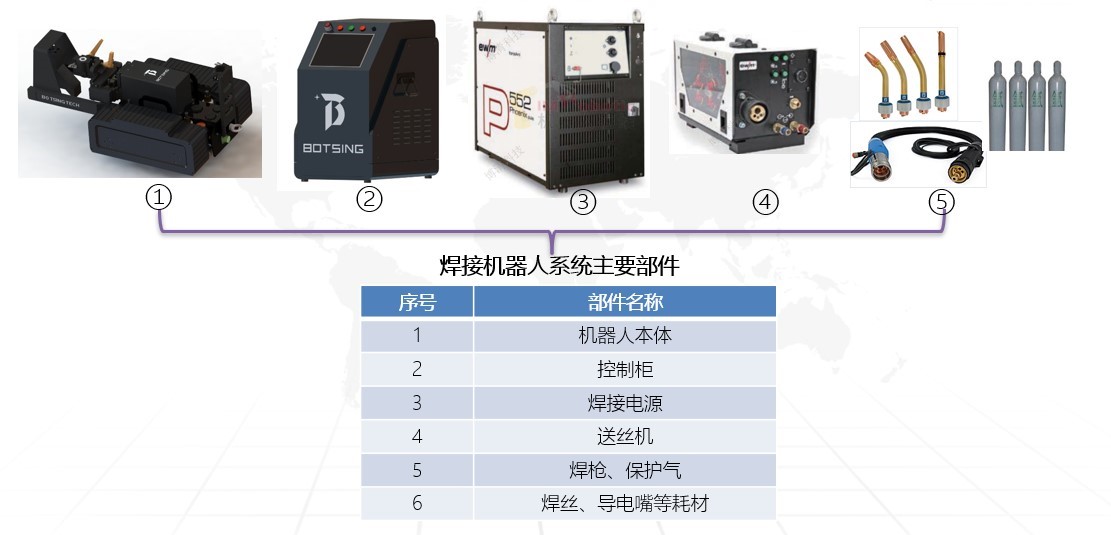Together to understand the robot welding fusion welding protection process
Date:2021-10-12 Views:788
Fusion welding is also a welding method that heats the workpiece interface to a molten state during the welding process, and is completed without pressure. In order to improve the efficiency and quality of fusion welding, welding robots can also be used to complete it. What should be paid attention to at this time? When welding robots perform fusion welding, the heat source rapidly heats and melts the interface between the two workpieces to be welded, forming a molten pool.

The molten pool moves forward with the heat source, and after cooling, it forms a continuous weld that connects the two workpieces into one, efficiently completing the entire welding process. Although the use of welding robots has greatly improved efficiency, if the atmosphere directly contacts the high-temperature molten pool during the entire process, the oxygen in the atmosphere will oxidize metals and various alloy elements.
Nitrogen, water vapor, and other substances in the atmosphere enter the molten pool, and during the subsequent cooling process, defects such as pores, slag inclusions, and cracks are formed in the weld seam, deteriorating the quality and performance of the weld seam. In order to improve welding quality, various protection methods have been developed, such as using gases such as argon and carbon dioxide to isolate the atmosphere, in order to protect the arc and molten pool rate during welding; Alternatively, by adding titanium iron powder with high oxygen affinity to the electrode coating for deoxidation, beneficial elements such as manganese and silicon in the electrode can be protected from oxidation and entering the molten pool. After cooling, high-quality welds can be obtained.
On the other hand, due to the difficulty in releasing the charges induced by the welding robot system at the gate through this resistor, the accumulation of charges can increase the voltage, resulting in the pipe being broken down or performance indicators decreasing before being used or welded. To prevent such accidents, the key is to avoid the gate being suspended, that is, to maintain a DC path between the gate and the source electrode. Usually, a resistance of several k Ω can be connected between the gate and source electrodes to prevent excessive charge accumulation and protect the tube.
Fusion welding is also a welding method that heats the workpiece interface to a molten state during the welding process, and is completed without pressure. In order to improve the efficiency and quality of fusion welding, welding robots can also be used to complete it. What should be paid attention to at this time? When welding robots perform fusion welding, the heat source rapidly heats and melts the interface between the two workpieces to be welded, forming a molten pool.

The molten pool moves forward with the heat source, and after cooling, it forms a continuous weld that connects the two workpieces into one, efficiently completing the entire welding process. Although the use of welding robots has greatly improved efficiency, if the atmosphere directly contacts the high-temperature molten pool during the entire process, the oxygen in the atmosphere will oxidize metals and various alloy elements.
Nitrogen, water vapor, and other substances in the atmosphere enter the molten pool, and during the subsequent cooling process, defects such as pores, slag inclusions, and cracks are formed in the weld seam, deteriorating the quality and performance of the weld seam. In order to improve welding quality, various protection methods have been developed, such as using gases such as argon and carbon dioxide to isolate the atmosphere, in order to protect the arc and molten pool rate during welding; Alternatively, by adding titanium iron powder with high oxygen affinity to the electrode coating for deoxidation, beneficial elements such as manganese and silicon in the electrode can be protected from oxidation and entering the molten pool. After cooling, high-quality welds can be obtained.
On the other hand, due to the difficulty in releasing the charges induced by the welding robot system at the gate through this resistor, the accumulation of charges can increase the voltage, resulting in the pipe being broken down or performance indicators decreasing before being used or welded. To prevent such accidents, the key is to avoid the gate being suspended, that is, to maintain a DC path between the gate and the source electrode. Usually, a resistance of several k Ω can be connected between the gate and source electrodes to prevent excessive charge accumulation and protect the tube.











